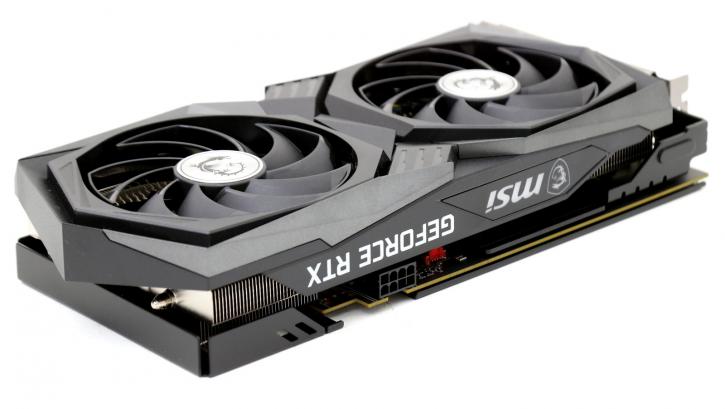Introduction
MSI RTX 3050 Gaming X 8G
Performance in a Full HD entry-level category
We review the MSI GeForce RTX 3050 gaming X 8G model a little late because of shipping problems. There are raytracing and DLSS Tensor cores to be found on the cards, as well as the Twinfrozr cooling system that is used by MSI. And you know that means no noise at all. Disobedient to AMD's dramatic 200 USD Radeon RX 6500 XT with 4GB/64-bit graphics memory, 1024 shader processors tied to x4 PCIe lanes; the GeForce RTX 3050 is 50 bucks more expensive (MSRP) based on 8GB/128-bit and 2560 shader processors utilizing x8 PCIe lanes. basically we're looking at 1650 Series performance, but with added Raytrracing options and DLSS. The math immediately becomes visible, NVIDIA will win significantly today. With that 2560 shading cores and Ampere architecture, this 3050 series is bound to impress in the 1920x1080 and maybe even 2560x1440 (WQHD) domain. If stock becomes available in plentiful volumes though, as pricing will be everything. The GPU is again fabricated on an 8nm node derived from Samsung. This process further develops Samsung's 10nm process; no EUV is applied in production just yet. Notable is that a change is in effect, the memory runs at 14 Gbps and finally, entry-level receives 8GB GDDR6. The Ampere lineup nearly doubles ray-tracing performance with Gen2 ray-tracing cores and 3rd iteration Tensor cores. These cards will all be PCIe 4.0 interface compatible and offer HDMI 2.1 and DisplayPort 1.4a, but most importantly is that nicer shader processor count (referred to as CUDA cores by NVIDIA). We now meet the NVIDIA GA106 GPU. And despite being a lower segmented card, it still holds a sizable GPU die. In this round, NVIDIA is not seeding Founder edition cards, aka FE GeForce RTX 3050. But of course, they do present the reference specification; a boost clock of 1777 MHz and a base clock of 1552 MHz.
| GeForce RTX | Base Clock (MHz) | Boost Clock (MHz) | VRAM Base Clock (MHz) | VRAM Effective Datarate (MHz) | Max Power % |
| 3060 Reference | 1320 | 1780 | 1875 | 15000 | - |
| 3050 Reference | 1552 | 1777 | 1750 | 14000 | 0 |
| 3050 ASUS STRIX OC | 1552 | 1860 | 1750 | 14000 | 10 |
| 3050 MSI Gaming X | 1552 | 1845 | 1750 | 14000 | 8 |
| 3050 Palit DUAL OC | 1552 | 1822 | 1750 | 14000 | 7 |
| 3050 Gigabyte Gaming OC | 1522 | 1822 | 1750 | 14000 | 26 |
The Gaming X model from MSI that we're going to look at is a premium MSI graphics card in this class, even though it is a lot less powerful than a high-end model. It only comes close to living up to its name. As an example, the well-known Gaming-X cooler, which has a duo of Axial fans. As long as you don't mind the shorter length, the cooler's design is almost the same as that of its bigger brother. Being cost-effective they scrapped the BIOS thus there's no dual BIOS It has a somewhat more powerful power limiter available though as well as a 2-spinner fan cooler. Based on the NVIDIA GA106 LHR GPU, this time in a more limited configuration; it features a shader core count of 2560 and 8GB GDDR6 graphics memory running at 128-bit and 14 Gbps. The card is powered by a single (6+2) pin header. Armed with a BIOS that supports a Turbo clock speed of 1845 MHz (1777MHz = reference) under the default BIOS setting. This card manages to generate 31 Dba noise levels expect sheer silence in acoustics. We rate the card as having a normal draw of ~125 Watts. We tested the factory tweaked model, it overclocks well, and is slightly faster than the founder edition requirements for the base model.


